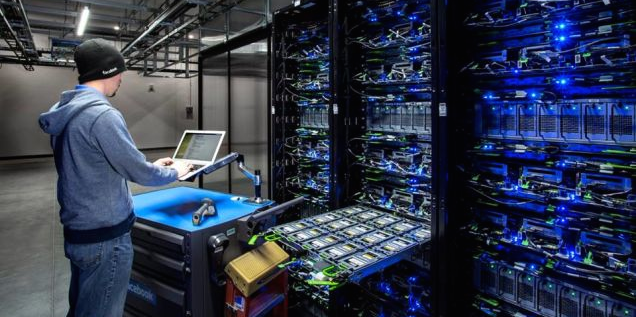Data Centers and Humidity Issues Affecting Performance

The American Society of Heating, Refrigeration & Air-Conditioning Engineers (ASHRAE) is the professional body most closely related to the issue of datacenter cooling from a maintenance and installation perspective. ASHRAE established Technical Committee 9.9 (TC9.9) to focus on datacenter cooling issues: server farms generate a lot of heat from their operation, and this has to be dissipated, and traditionally this has meant AC units cranking on high, pushing up power usage and also the costs of operation.
Free cooling, or airside economization, is the practice of using local climate air to cool a datacenter, however this has obvious limitations depending on where you are located. Cold areas can use this more effectively than a datacenter in, say, south Florida or New Mexico. The issue is you cannot use airside economization in any location, and you can’t use it all of the time in most.
ASHRAE TC 9.9 has traditionally recommended slightly decreasing the AC and allowing a slightly higher temperature in the datacenter. This results in an incremental cost saving, but also moves the use of AC to supplement airside economization wherever possible. At the same time, this allows hardware to continue to operate within warranty terms and conditions. TC 9.9 has raised the temperature limits on three occasions since 2004, but there is another dynamic at play aside from temperature: relative humidity.

Humidity and temperature are related, but the essential phrase here is “relative humidity”. TC 9.9 develops recommendations in conjunction with IT equipment manufacturers, and there are three ranges of environmental conditions set into ASHRAE’s data center guidelines:
Optimal temperature and humidity settings to replicate high reliability environmental conditions and maximize energy efficiency.
This a less optimal, but nevertheless acceptable operating environmental range of temperature and humidity. This is also the operating range within which equipment manufacturers test their hardware to ensure it operates acceptably.
This is refers to environmental operating conditions which are beyond the allowable range, but which the hardware is capable of functioning within acceptable limits for short periods of time. Short term exposure to such environmental conditions may be permissible, but anything other than a short period of time may impair or degrade equipment life and reliability.
Data centers have approached the problem by staying within ASHRAE allowable environmental range to reduce operating costs, but still keep the equipment within the range for the manufacturers’ warranty terms and conditions.
ASHRAE has also recently finished a joint study with the University of Missouri, focused on the effect of humidity and electrostatic discharge (ESD). If a datacenter is equipped with an ESD rated floor, then this minimizes the impact of electrical discharges upon the hardware. However, it was always thought that higher levels of humidity would circumvent ESD-rated flooring and cause greater damage to hardware. What the study demonstrated was that with the same ESD-rated floor, a relative humidity level of 8% had broadly similar discharge impact as when it has a relative humidity level of 25%. What this means is that the ASHRAE range is being amended again to reflect a more relaxed approach to relative humidity levels and the operational effectiveness of the hardware datacenters contain.
For information click on www.jobtraq.com
